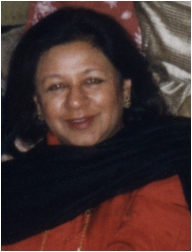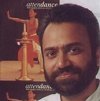 |
  |
 |
  |
Remembering Rupa Lal, dance patron and promoter ObiTribute by Ashish Khokar, editor attendance, Bangalore e-mail: khokar1960@gmail.com January 27, 2004  "I'm not well so can we skip dinner and do tea?" she asked when I was in Delhi last November. Little did I realize I will never get to see her again, that gracious, gentle and genuine human being called Rupa Lal. To think she is no more and that she died so young, barely fifty plus, is shocking. Rupa's suffering with cancer, an illness she had kept hidden from all, took its toll and she died on 8th Jan. 2004. The same date as Nala Najan. Why Rupa is worth remembering is because she stood in the Delhi-lot of attention-and-award-grabbers a sane person, fully satisfied person in the little nook of excellence she had created - the Natya Ballet Centre. Of course, it was handed down to her by her illustrious mother, Kamla Lal, herself an art patron, but Rupa enhanced it by her own sensitivity and sensibilities. Her mother's mainstay was mythological ballets (Krishanleela was started by her and ran for two decades followed by Surdas, Amir Khusro and many others). After Kamla Lal's death, Rupa realized how difficult it was to sustain interest in such productions, especially in view of onslaught on the TV by Ramanand Sagar's mythological creations. She valiantly tried to run the show after her mother died in 1985 but by the 90s realized she could serve the arts more by creating a platform for younger dancers in need of a platform. Thus, she supported the efforts of the Ranjana Gauhars, the Jyoti Shrivastavs and the Navtej Johars to function and flourish at large. Rupa was not petty but a professional at heart. And she ran her family's sugar factories with equal Úlan. Unlike other promoters of arts, especially hailing from quasi-industrialist families, Rupa did not show off her monies (and she had plenty), lived an understated life and presented to the Delhi audiences, first-rate performances by dancers who showed exceptional merit like Daksha Sheth, Navtej Johar, Aditi Mangaldas. Rupa's presentations set the tone for the season and were most well attended of events, a rarity in Delhi often, where organizers seek audiences, which fail to turn up in droves. If this happened with Rupa's presentations, it was because right from the invite (designed mostly by Rupika Chawla) to the hall, everything reeked of excellence, discipline and quality. Rupa Lal was a true patroness of arts and never once said so. That was her greatness and that is why we celebrate her and salute her memory. It is a big loss for Delhi, the first city, which the Lal family had made home for over a century. Her family owned sugar mills and companies were itself well-run by Rupa herself once her father Narinder Lal fell ill. Rupa did not marry and sacrificed her all to serve her family, which included a larger one comprising of artists. Seniors like Bhagwandas Varma, Maya Rao, Usha Venkateswaran will miss her while the younger lot shall hopefully recall her selfless service to art, especially dance. Not just I, but the majority of the dance fraternity has lost a dear friend. 
Ashish Khokar has written over 25 books on Indian arts and culture; heritage and spirituality besides being columnist of Times of India and editor-publisher of dance books and biographies. |